"Exploring the unmowed corners of the world."
Books by Anita Sanchez
Anita Sanchez is an award-winning author of books on environmental science and nature for children and adults.
New this spring from Holiday House!

SCAT: The Incredible Science of Wildlife Poop.
Discover how poop can actually help protect our planet in this nonfiction book on the nutrient cycle and scientific problem solving.
What could be more revolting, useless, and downright disgusting than poop? But in nature’s endless and complex cycles, there’s no such thing as waste. The poop of wild animals is full of surprising power: it can be food, shelter, a way for creatures to communicate, and more. For scientists, scat can reveal clues about how animals are responding to climate change threats.
 New this spring from Lee and Low: Go on a bird-listening walk with Mia, a visually-impaired child.
New this spring from Lee and Low: Go on a bird-listening walk with Mia, a visually-impaired child.
Meet an unlikely climate change hero: the wet, slimy stuff known as seaweed.
The Monkey Trial: The Battle Over Evolution in the Classroom (Clarion Books)
Starred reviews from Kirkus and Publishers Weekly!
Revealing little-known facts about the fight to teach evolution in schools, this riveting account of the dramatic 1925 Scopes Trial (aka “the Monkey Trial”) speaks directly to today’s fights over what students learn, the tension between science and religion, the influence of the media on public debate, and the power of one individual to change history.
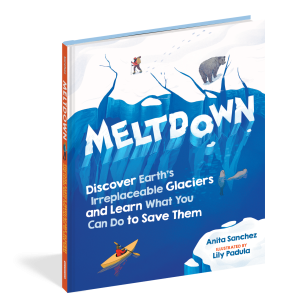 Packed with information, grounded in the latest science, lively in its writing, illustrated throughout, Meltdown gives readers an eye-opening overview of glaciers and how important they are: There are over 100,000 glaciers covering 10% of earth’s landmass, acting as protective shields to cool the atmosphere and holding almost three-quarters of the planet’s fresh water. We learn how glaciers were formed (some over two million years ago), how they move and carve the landscape, how they’re replenished, and how scientists study them (the bluer the ice, the older it is). We discover secrets of earth’s climate history hidden deep in a glacier’s core—and understand the delicate ecosystem of animals and plants that thrive in their frigid worlds, from keystone species like salmon to curiosities like ice worms.
Packed with information, grounded in the latest science, lively in its writing, illustrated throughout, Meltdown gives readers an eye-opening overview of glaciers and how important they are: There are over 100,000 glaciers covering 10% of earth’s landmass, acting as protective shields to cool the atmosphere and holding almost three-quarters of the planet’s fresh water. We learn how glaciers were formed (some over two million years ago), how they move and carve the landscape, how they’re replenished, and how scientists study them (the bluer the ice, the older it is). We discover secrets of earth’s climate history hidden deep in a glacier’s core—and understand the delicate ecosystem of animals and plants that thrive in their frigid worlds, from keystone species like salmon to curiosities like ice worms.
And we learn how climate change is threatening the glaciers, in turn, threatening all the benefits they bring the planet—and all the positive steps readers can take to become climate activists, reduce their carbon footprint, and save the glaciers.
 Save the Endangered Species!
Save the Endangered Species!
A multi-part series on some of the most fascinating and rare wildlife on our planet.
Save the Whale Sharks
Save the Giraffes
Save the Gorillas
Splash into Hello, Puddle!
A nonfiction picture book exploring a deceptively simple but unexpectedly crucial resource for wildlife: puddles! This lyrical, gorgeously illustrated nonfiction picture book is perfect for young science learners and nature lovers. Order

Hello, puddle! Who’s here?
A normal everyday puddle may not seem very special. But for a mother turtle, it might be the perfect place to lay her eggs. For a squirrel, it might be the only spot to cool off and get a drink when the sun is shining down in July. And for any child, it can be a window into the elegant, complex natural world right outside their window.
With lush, playful illustrations and fun facts about the animals featured, Hello, Puddle! is a joyful celebration of the remarkable in the ordinary, and the importance of even the most humble places in fostering life. more
Rotten! Vultures, Beetles, and Slime: Nature’s Decomposers
Open this book to uncover the dirty rotten truth about one of nature’s most fascinating processes.
A Junior Library Guild Selection
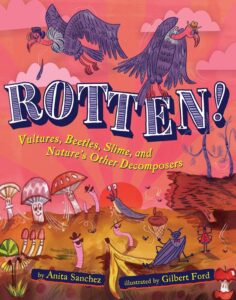 A funny and fact-filled look at decomposition in all of its slimy glory, illustrated with dazzling full-color art by Gilbert Ford. Vultures, fungi, dung beetles, and more aid in this fascinating and sometimes smelly aspect of the life cycle that’s right under our noses.
A funny and fact-filled look at decomposition in all of its slimy glory, illustrated with dazzling full-color art by Gilbert Ford. Vultures, fungi, dung beetles, and more aid in this fascinating and sometimes smelly aspect of the life cycle that’s right under our noses.
ITCH: Everything You Didn’t Want to Know About What Makes You Scratch.
 Everybody gets itchy, and every kid will love this title that scratches the itch to know more about the history, anatomy, botany, biology behind it.
Everybody gets itchy, and every kid will love this title that scratches the itch to know more about the history, anatomy, botany, biology behind it.
You can feel it coming on—that terrible, tortuous ITCH. It’s your body’s way of sending you a message you can’t miss. And there are so many things that make us itch—from fungus to fleas, mosquitoes to nettles, poison ivy to tarantulas!
Combining history, anatomy, laugh-out-loud illustrations, and even tips to avoid—and soothe—the itch, Anita Sanchez takes readers on an intriguing look into what makes you scratch. Illustrations by Gilbert Ford.
ITCH is a Junior Library Guild selection.
“A fun, intriguing, and accessible mix of anatomy and history, with a healthy dose of gross.”–Kirkus, STARRED review
“Factual and surprisingly fun, here’s a very readable book about a common experience.”–Booklist, STARRED review
Wait Till It Gets Dark!
It’s night. It’s dark. Time to go indoors—or is it? The outdoors at night can be a scary place. Wait Till It Gets Dark by Anita Sanchez and George Steele will help young readers investigate the mysterious nature of night.
Illustrations by John Himmelman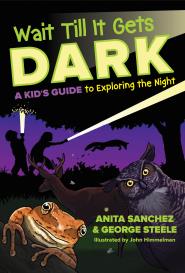
Discover nighttime landscapes and the nocturnal animals that inhabit them, from desert coyotes to the frog chorus in a backyard pond—and a corner of the bathroom at midnight where a spider lurks…
Can you walk as silently as a fox? Use your night vision like an owl? Follow a scent trail? Filled with activities and ideas, this book invites readers of all ages to explore the mysterious world of their own backyards after dark.
Karl, Get Out of the Garden!
Swine’s snout? Yellow daisy? Dandelion?
What was the right name? Young Karl Linné wasn’t sure—and neither was anyone else!
Doctors, gardeners, farmers—everybody!—argued about the names of plants and animals. How could scientists communicate if they couldn’t even agree on what to call things?
Karl knew there was only one solution: to organize and name EVERY LIVING THING in the world. But it was an enormous job. Could he do it?
He decided to try. Karl created a new language of science—and forever changed the way people saw the world.
Karl, Get out of the Garden! is a picture book biography of Carolus Linnaeus. The famous naturalist was a brilliant scientist whose system of binomial nomenclature–two names for each living thing–is still used today. But he started out as a curious little boy with a passion for weeds and bugs. His exuberant, outspoken, and defiant personality makes him a fascinating character.
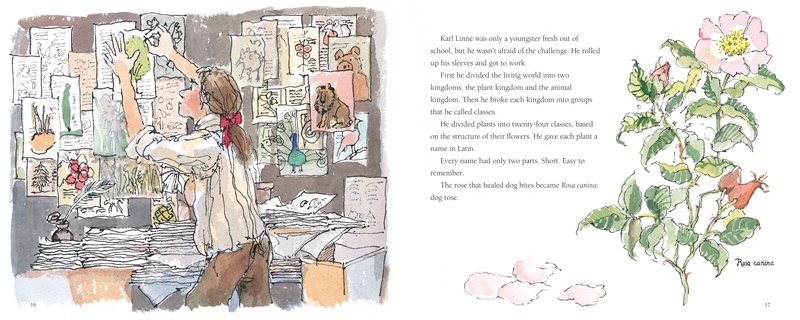
Illustrations by Catherine Stock
In Praise of Poison Ivy
As a science writer, I’m fascinated by plants and animals that are unloved—like dandelions, tarantulas, and what is perhaps the world’s most hated plant—poison ivy.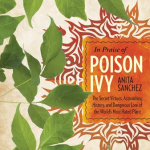
Millions of people are allergic to poison ivy, which contains one of the most potent toxins on earth. But the astounding paradox is that poison ivy is a plant of immense ecological value. It’s a plant of a powerful plant with a dramatic history and an increasingly important role in the American landscape. For me, poison ivy has served as a lens through which to take a closer look at the green world, and the changes and challenges that face our planet.
In Praise of Poison Ivy is a nonfiction book for adults, which explores the vices and virtues of a powerful plant with a dramatic history and an increasingly important role in the American landscape.
Leaflets Three, Let it Be!: The Story of Poison Ivy
Leaflets Three, Let it Be!: The Story of Poison Ivy is a children’s picture book, designed to help the youngest outdoor explorers both appreciate and avoid poison ivy.
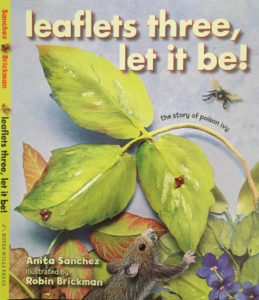 Beautiful illustrations by Robin Brickman highlight the amazing variety of wildlife that use poison ivy for food and shelter. And no, they don’t get itchy–only humans are affected by the toxic three leaves. Bees buzz in poison ivy flowers, gathering poison ivy nectar. Cardinals use poison ivy rootlets to line their nests. Insects roll themselves up in a snug blanket of poison ivy leaves while toads hunt and spiders spin webs in the shade. And birds by the dozens come flocking to a poison ivy feast of winter berries.
Beautiful illustrations by Robin Brickman highlight the amazing variety of wildlife that use poison ivy for food and shelter. And no, they don’t get itchy–only humans are affected by the toxic three leaves. Bees buzz in poison ivy flowers, gathering poison ivy nectar. Cardinals use poison ivy rootlets to line their nests. Insects roll themselves up in a snug blanket of poison ivy leaves while toads hunt and spiders spin webs in the shade. And birds by the dozens come flocking to a poison ivy feast of winter berries.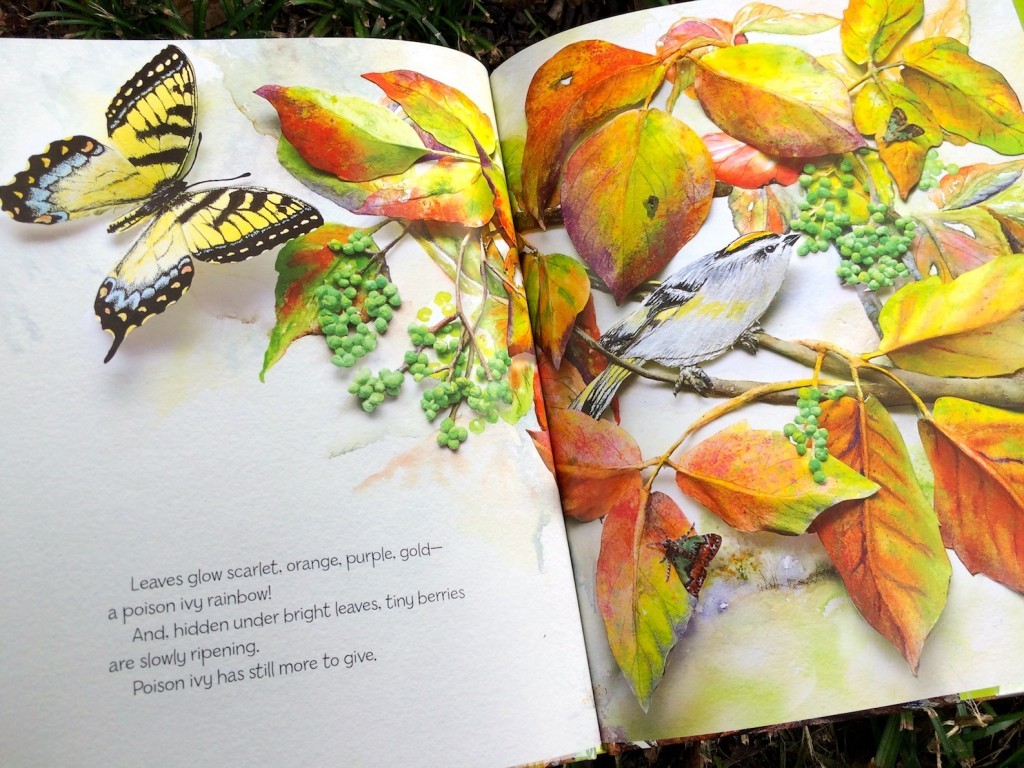
Anita’s other published books include Mr. Lincoln’s Chair: The Shakers and Their Quest for Peace, The Invasion of Sandy Bay, and The Teeth of the Lion: The Story of the Beloved and Despised Dandelion.
The Unmowed Blog
The unmowed corners.
That’s where life shoves through, grows to the sun, flourishes.
I stop every time I’m in a parking lot, a schoolyard, a graveyard–anywhere–and see what plants are growing. There’s unintended beauty in the untended places. I look to see what’s pushing through the cracks in the pavement. What the mowers have missed. What the weed whackers have failed to whack.
So come on this journey with me. Examine and rejoice in that which no one else notices.
Read Unmowed Blog posts here.
For Educators
Welcome!
Whether you’re a classroom teacher, a homeschooler, a parent, or just someone who loves kids, books and nature, I hope you will find my books to be helpful. My goal in writing each one has been to excite young readers about science and help them discover the natural world that surrounds us.
Hello Puddle! Educators’ Guide with Student Activities
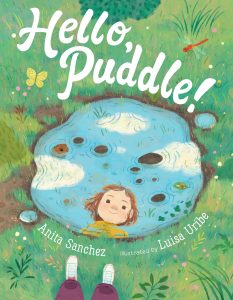
Leaflets Three, Let It Be! The Story of Poison Ivy Educators’ Guide with Student Activities

A Sky That Sings: Teacher’s Guide with Student Activities

And for something completely different…
Most of my books are science-based nonfiction, with one exception: a historical novel for middle grade. The Invasion of Sandy Bay is a true story of a long-forgotten incident in history, when the British invaded a little Massachusetts town in 1814. Redcoats came face to face with New England fishermen—and enemies found themselves working together instead of fighting each other.
The Invasion of Sandy Bay Educators’ Guide with Student Activities

Programs for Schools and Libraries
A published author and professional educator, Anita Sanchez has many years of experience in providing classes and hands-on, participatory programs to a wide range of audiences.
The former director of Educational Programming at the Five Rivers Center with the New York State Department of Environmental Conservation, she has presented classes in schools throughout New England and New York State, and given workshops at the American Museum of Natural History, National Science Teaching Association, Harvard Natural History Museum, the New York State Museum, and many libraries, museums, and classrooms.

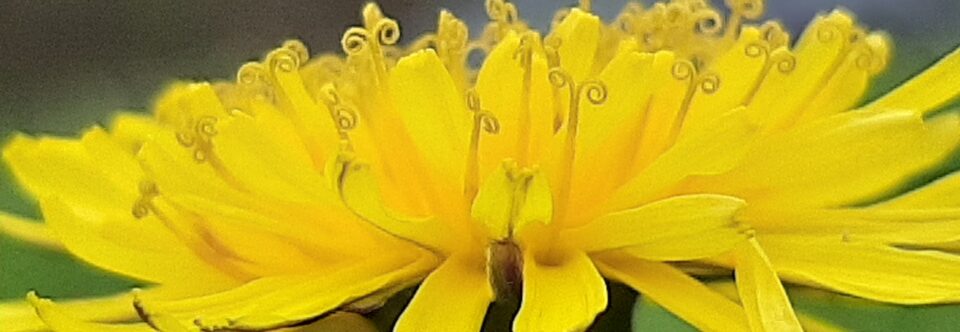


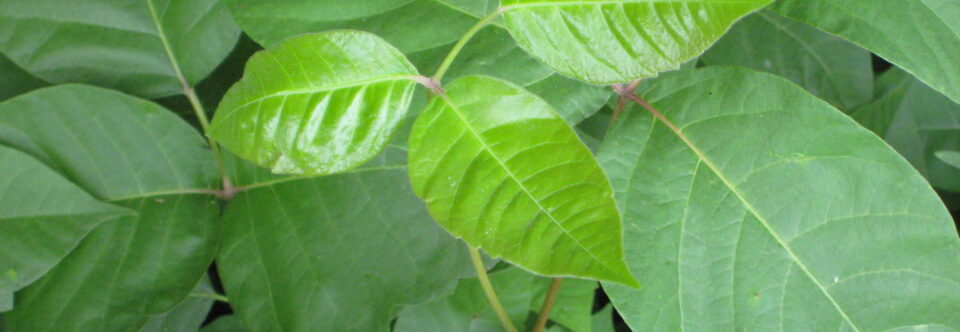
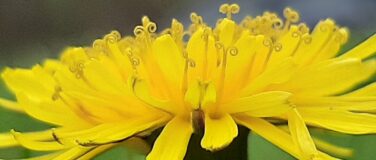
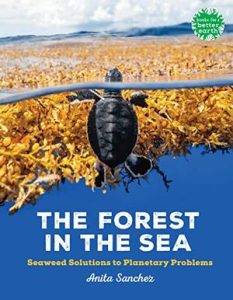 Imagine forests where you can float weightlessly among schools of fish. Huge green pastures where sea turtles graze. Forests that capture carbon from seawater and breathe out oxygen. The answers to many of our planet’s problems may lie underwater, in these forests of seaweed.
Imagine forests where you can float weightlessly among schools of fish. Huge green pastures where sea turtles graze. Forests that capture carbon from seawater and breathe out oxygen. The answers to many of our planet’s problems may lie underwater, in these forests of seaweed.

